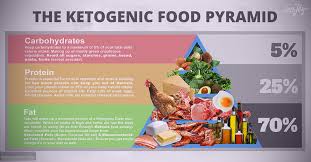
Breaking News
 Christmas Truce of 1914, World War I - For Sharing, For Peace
Christmas Truce of 1914, World War I - For Sharing, For Peace
 The Roots of Collectivist Thinking
The Roots of Collectivist Thinking
 What Would Happen if a Major Bank Collapsed Tomorrow?
What Would Happen if a Major Bank Collapsed Tomorrow?
Top Tech News
 Travel gadget promises to dry and iron your clothes – totally hands-free
Travel gadget promises to dry and iron your clothes – totally hands-free
 Perfect Aircrete, Kitchen Ingredients.
Perfect Aircrete, Kitchen Ingredients.
 Futuristic pixel-raising display lets you feel what's onscreen
Futuristic pixel-raising display lets you feel what's onscreen
 Cutting-Edge Facility Generates Pure Water and Hydrogen Fuel from Seawater for Mere Pennies
Cutting-Edge Facility Generates Pure Water and Hydrogen Fuel from Seawater for Mere Pennies
 This tiny dev board is packed with features for ambitious makers
This tiny dev board is packed with features for ambitious makers
 Scientists Discover Gel to Regrow Tooth Enamel
Scientists Discover Gel to Regrow Tooth Enamel
 Vitamin C and Dandelion Root Killing Cancer Cells -- as Former CDC Director Calls for COVID-19...
Vitamin C and Dandelion Root Killing Cancer Cells -- as Former CDC Director Calls for COVID-19...
 Galactic Brain: US firm plans space-based data centers, power grid to challenge China
Galactic Brain: US firm plans space-based data centers, power grid to challenge China
 A microbial cleanup for glyphosate just earned a patent. Here's why that matters
A microbial cleanup for glyphosate just earned a patent. Here's why that matters
 Japan Breaks Internet Speed Record with 5 Million Times Faster Data Transfer
Japan Breaks Internet Speed Record with 5 Million Times Faster Data Transfer
Can eating mostly fat help you lose weight?

Every January, fat's in the crosshairs of health columnists, fitness magazines, and desperate Americans. This year, PopSci looks at the macronutrient beyond its most negative associations. What's fat good for? How do we get it to go where we want it to? Where does it wander when it's lost? This, my friends, is Fat Month.

Related question: Is butter a carb?
Pixabay
The ketogenic diet didn't start as a weight-loss method. It was a treatment for epileptic kids—one of the few that worked, especially for those who had already tried traditional medications. But odds are the only people you'll hear talking about it today are those looking to drop a few pounds without giving up butter.
Keto, as it's known among dieters, is based around getting most of your calories from fat, some from protein, and almost none from carbohydrates. It's like a more extreme form of Atkins, except keto actually came first. It became an epilepsy treatment back in the 1920s, whereas the weight-loss paper that inspired Dr. Atkins to establish his low-carb diet wasn't published until 1958.
The idea of eating fat in order to lose fat is obviously appealing. Oils and fats are filling and soothing, so prospective dieters feel they might not have to sacrifice as much. And everyone knows that carbs are the devil anyway, right? If it started as a medically-prescribed diet, surely it must be healthy.
But like your opinion on most fad diets, your thoughts on keto are probably based on vague notions sourced from the nightly news. Food trends tend to skyrocket to fame and fall from grace before science ever has a chance to weigh in. But you should want to see solid research before you commit to a whole new way of eating. In honor of PopSci's Fat Month, let's do a quick refresher on what keto really is—and whether it works.
What is the keto diet again?
The real ketogenic diet requires you to get 80-90 percent of your calories from fat. You should also consume about one gram of protein per kilogram of bodyweight and limit carbs to 10-15 grams a day. That's a huge shift from the average American diet, in which about half of all calories come from carbs.

 The State's Last Stand
The State's Last Stand


